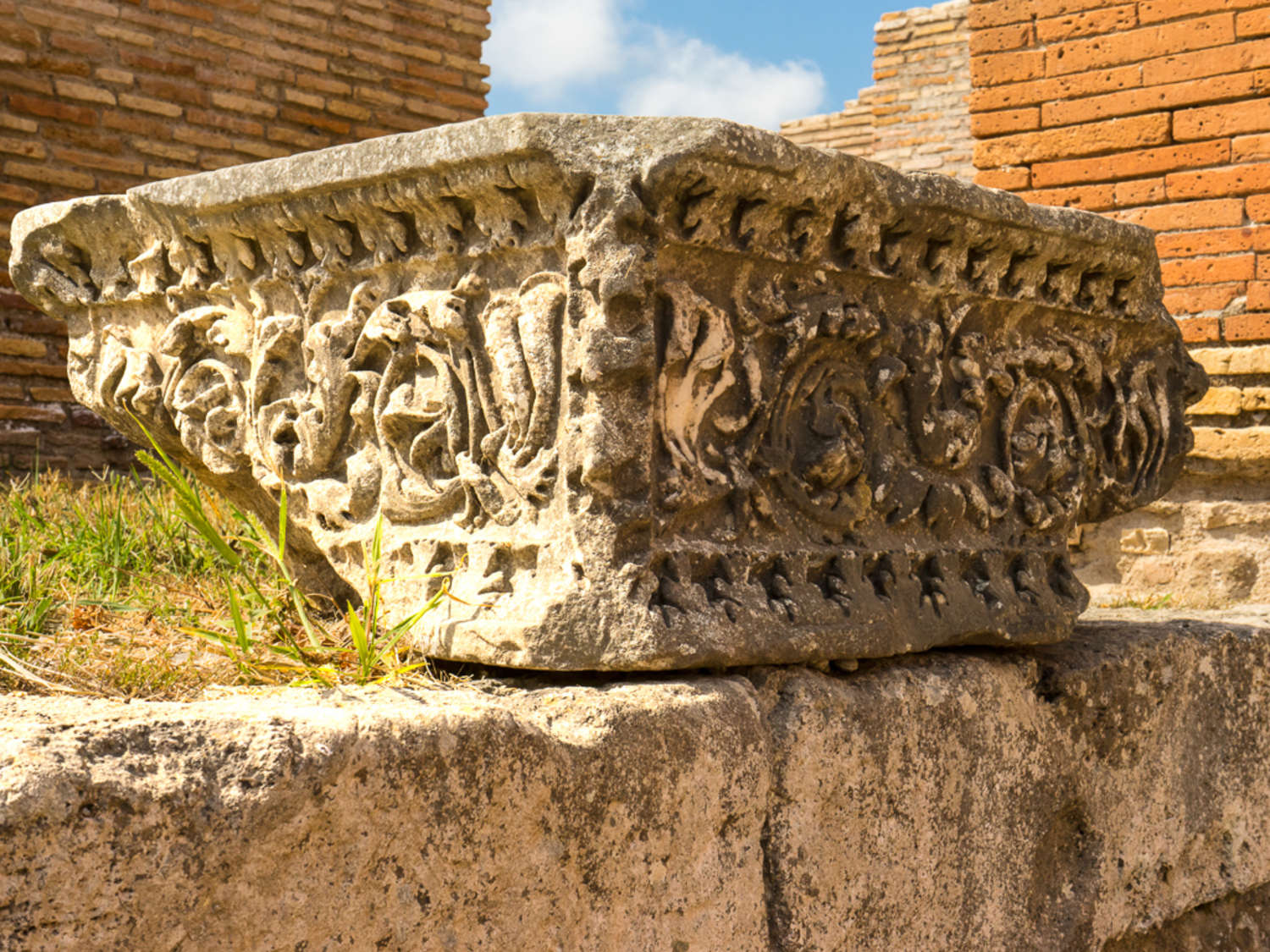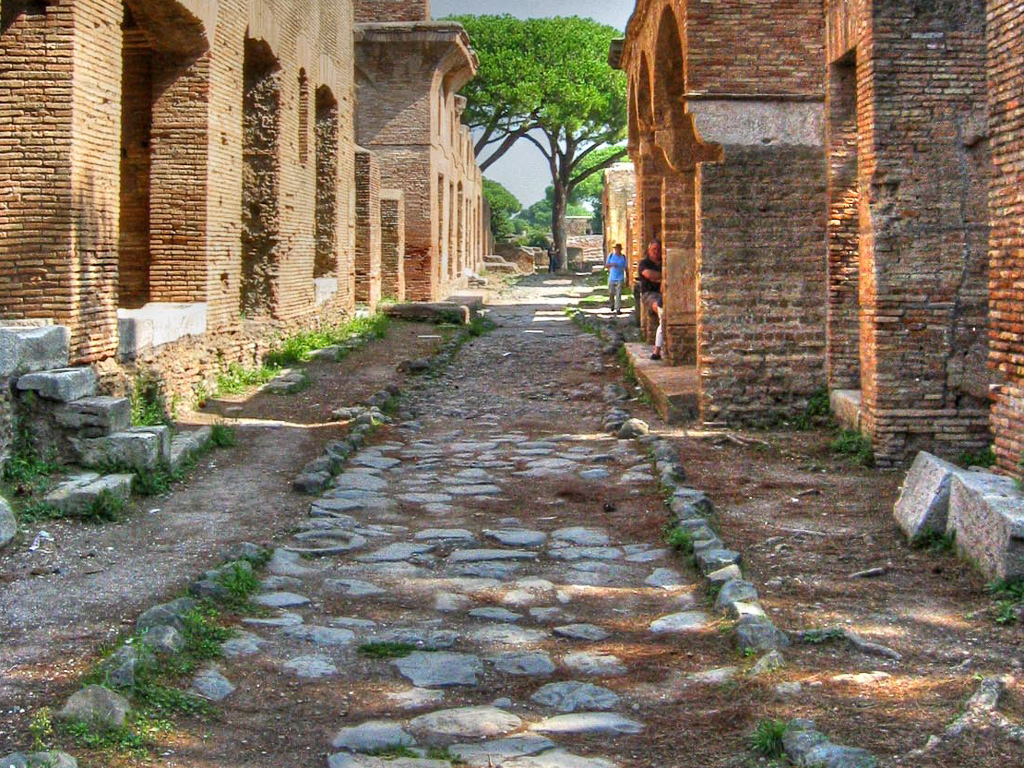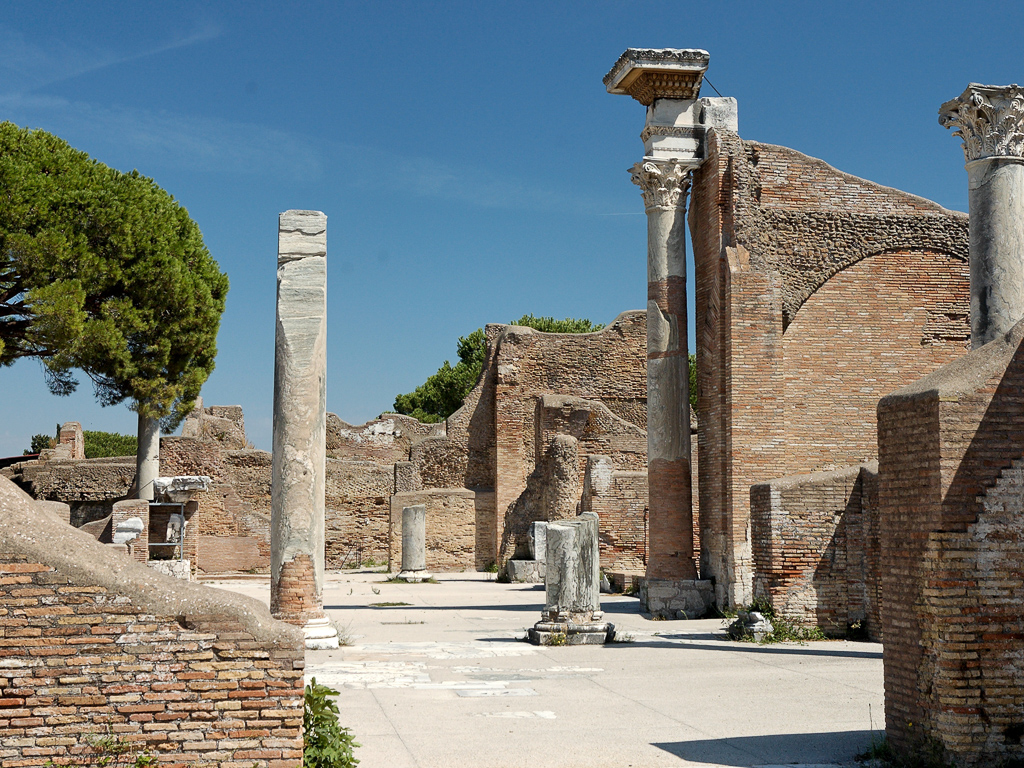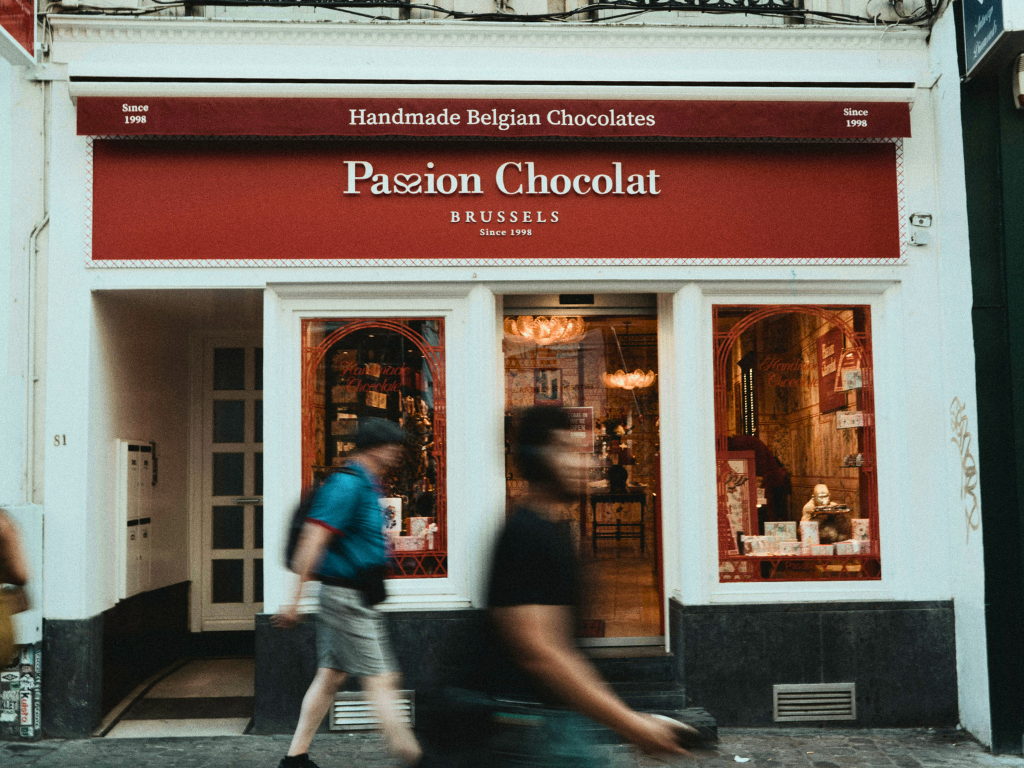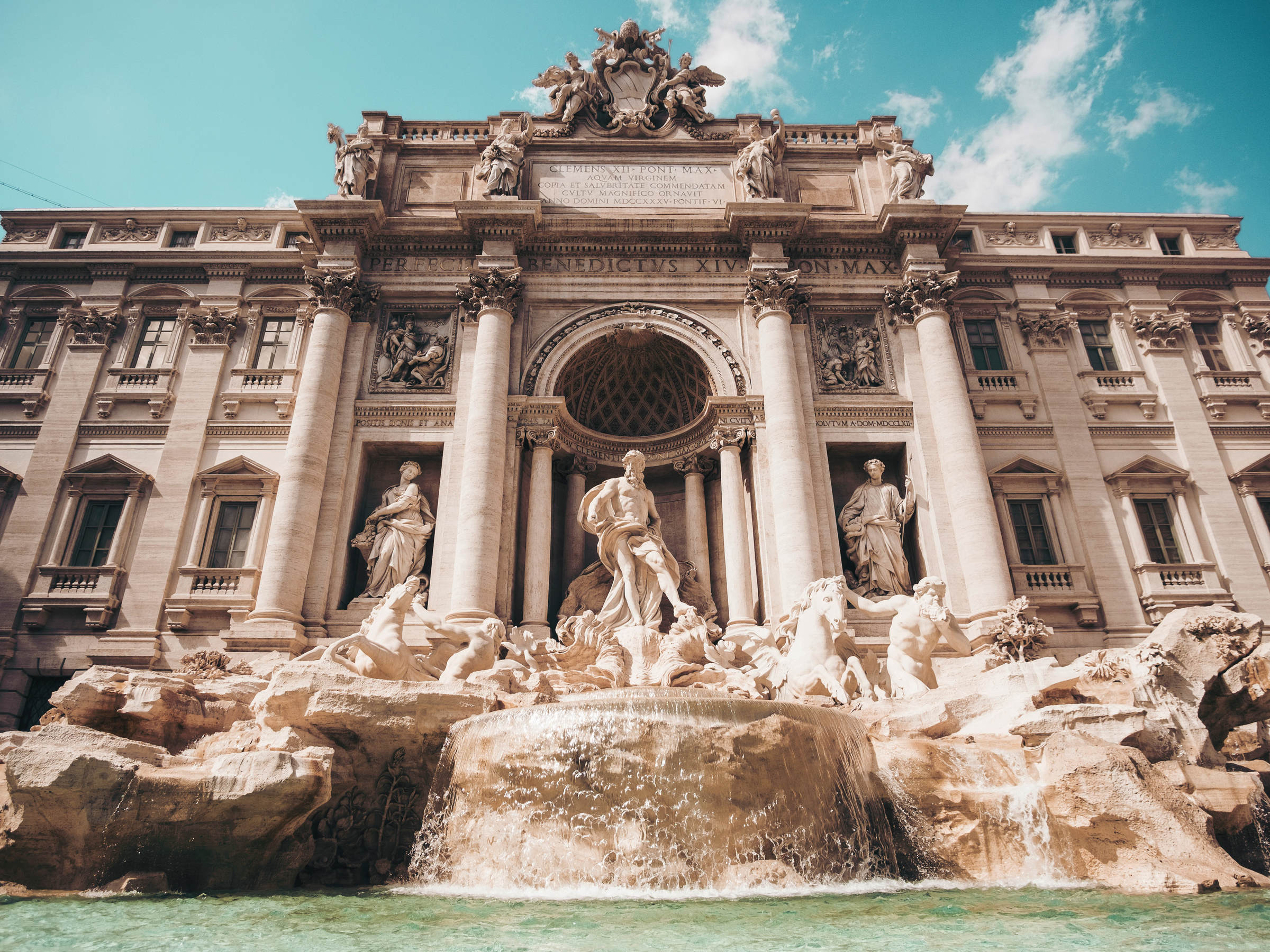One of the most common questions we get from travelers visiting Rome with kids is this: should we spend a full day of our trip to see Pompeii and Herculaneum? While Pompeii is a wonderful way to steep youngsters in the daily life of Ancient Rome, it’s a long day if starting from Rome, involving lots of time on trains and cars—it’s truly better visited from Naples.
With that in mind, we usually recommend a day trip from Rome to lesser-known Ostia Antica, the ancient port just 25 kilometers outside the city. Ostia offers a relatively uncrowded alternative to oft-visited Pompeii, and it’s particularly perfect for people visiting Rome with kids, who may only have a few days to see the sights.
Another reason we love Ostia is because it represents an outstanding example of a small, working-class Roman town, protected by millennia of river mud. Pompeii, by contrast, was a little more aristocratic—those who are able to visit both will come away with a wonderfully holistic view of the different tranches of Roman society.
We recently visited Ostia Antica on one of our Ostia Archaeology excursions, with a few kids in tow. With few other visitors and plenty of warm, Roman sunshine, we were transported back 2000 years. Here are several things that work well for kids at Ostia and make it the perfect place for the under 12 crowd to learn about Ancient Rome:
Ruts in the Decumanus Maximus
The main road, or Decumanus Maximus, of Ostia is very well preserved. As we walked along it, Livia, an archaeologist who was our guide, pointed out the ruts carved by wagon wheels over 500 years of use. This became a great game—Find the Rut!—as we went along and got the kids thinking about traffic, commerce, and the kinds of things that would be coming in and out of this bustling port city.
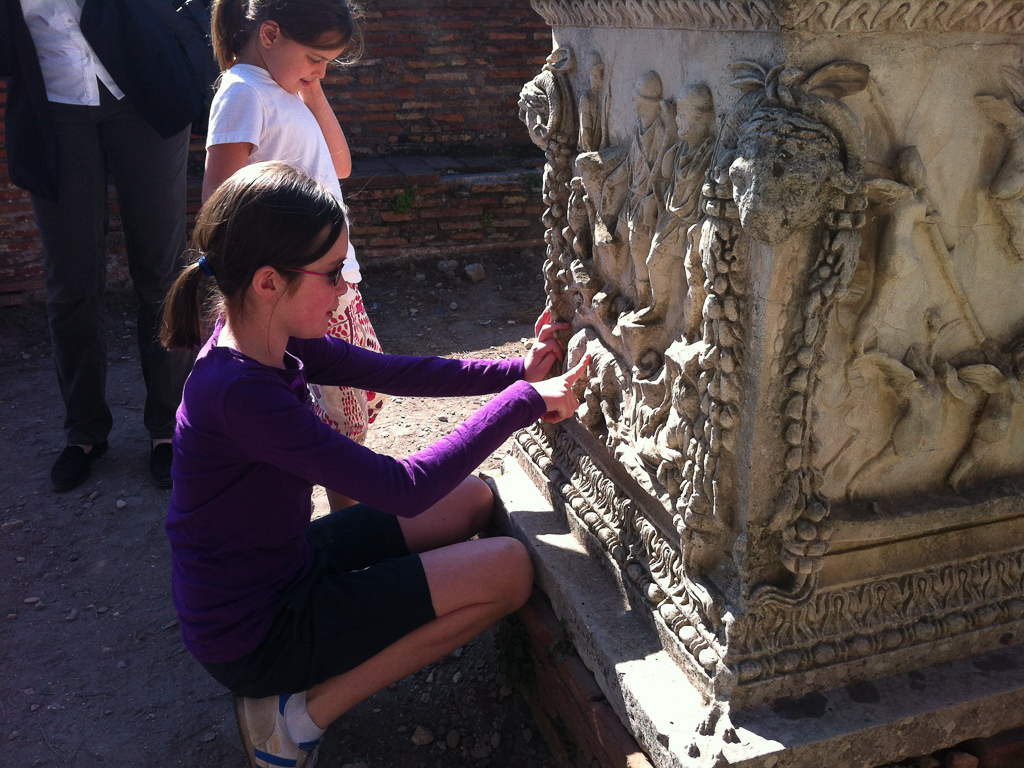
A Well in the middle?
At the end of the Decumanus Maximus there’s a well plopped down in the middle of the street. It’s a curious site that leads to all sorts of questions. Why would a well be dug in the middle of a street? How would wagons get around it?
Turns out it was built in the medieval period when Ostia was in decline, as evidenced by the different stone work. This provided an excellent “play archaeologist” game for the rest of the day, as we attempted to identify different construction styles throughout the site.
Roman Baths
The bath complexes at Ostia (there are several) offer a great opportunity to talk about hygiene and social interactions in ancient Roman cities. Since you can get into the under-floor hypocausts and walk in some of the furnace rooms, it’s also a great place to learn about Roman engineering and bath design. But, the best part was slipping underground into the subterranean drainage system, guided only by Livia’s flashlight.
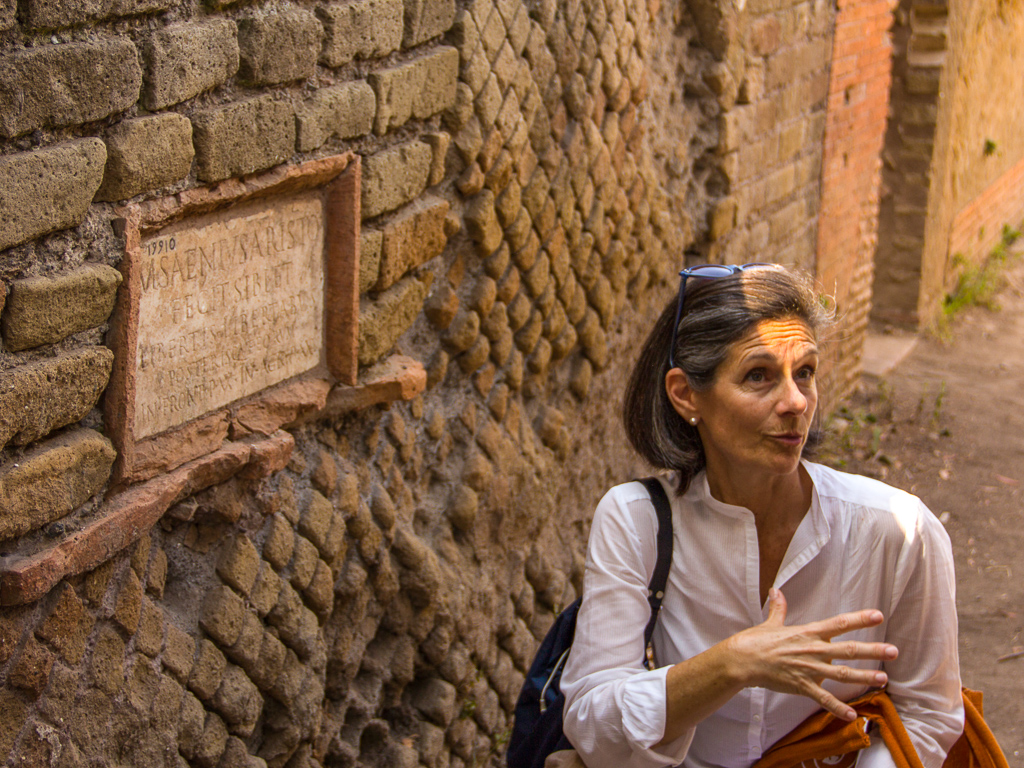
Shop Mosaics
Personally, one of our favorite spots at Ostia is the Piazzale of the Corporations, where shipping magnates set up their offices and traded everything from grain to marbles coming into Rome from the far reaches of the empire. Why? Because, instead of hanging neon signs outside of their shops, the shipping companies created fantastic black and white mosaics showing their wares. The best? Hands down, the exotic animal importer who commissioned a large elephant mosaic for the threshold to his office.
Context runs our Ostia excursion regularly as a private tour. Although not technically titled as a tour “for kids”, we’ve worked with a number of our Roman scholars to develop a customized version of the excursion geared for kids that has worked exceptionally well.
If your kids like Ancient Rome and are curious about how people lived 2000 years ago, we’d heartily recommend heading to Ostia and taking this route—just let us know you’ll be traveling to Rome with kids in the notes section of your order.
Or, looking for other ideas of things to do in Rome with kids? Take a peek at our Rome with Kids post for a full run-down of our favorite spots for tykes, tweens, and teens.
